Nissan Frontier 2019 Owner's Manual
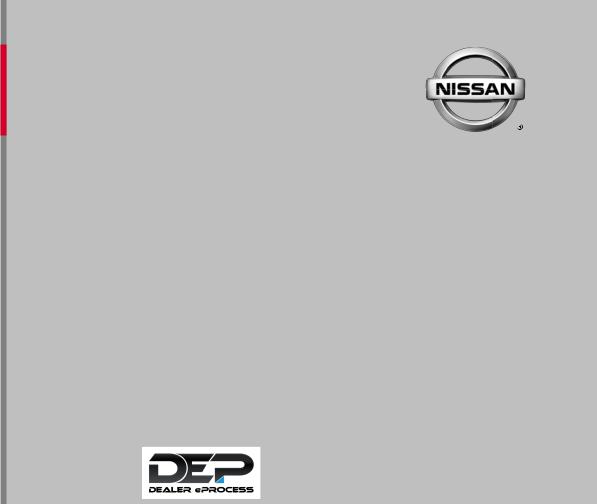
2019 FRONTIER
OWNER’S MANUAL
and MAINTENANCE INFORMATION
read carefully and keep in this vehicle.
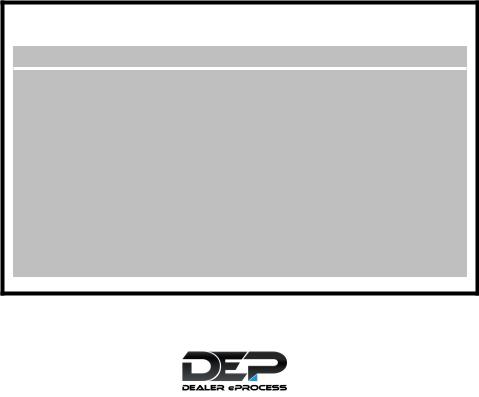
CALIFORNIA PROPOSITION 65 WARNING
WARNING
Operating, servicing and maintaining a passenger vehicle or off-highway motor vehicle can expose you to chemicals including engine exhaust, carbon monoxide, phthalates, and lead, which are known to the State of California to cause cancer and birth defects or other reproductive harm. To minimize exposure, avoid breathing exhaust, do not idle the engine except as necessary, service your vehicle in a well-ventilated area and wear gloves or wash your hands frequently when servicing your vehicle. For more information go to www.P65Warnings.ca.gov/passenger-vehicle.
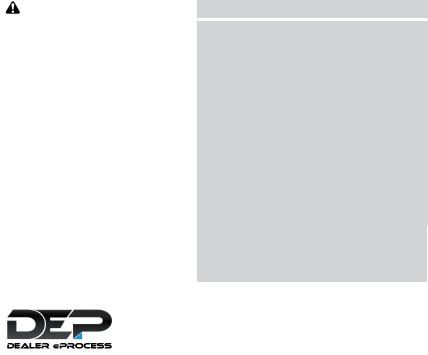
FOREWORD |
READ FIRST—THEN DRIVE SAFELY |
This manual was prepared to help you understand the operation and maintenance of your vehicle so that you may enjoy many miles (kilometers) of driving pleasure. Please read through this manual before operating your vehicle.
A separate Warranty Information Booklet explains details about the warranties covering your vehicle. The “Maintenance and schedules” section of this manual explains details about maintaining and servicing your vehicle. Additionally, a separate Customer Care/Lemon Law Booklet (U.S. only) will explain how to resolve any concerns you may have with your vehicle, and clarify your rights under your state’s lemon law.
When you require any service or have any questions, a NISSAN dealer will be glad to assist you with the extensive resources available to them.
In addition to factory-installed options, your vehicle may also be equipped with additional accessories installed prior to delivery. It is recommended that you visit a NISSAN dealer for details concerning the particular accessories with which your vehicle is equipped. It is important that you familiarize yourself with all disclosures,
warnings, cautions and instructions concerning proper use of such accessories prior to operating the vehicle and/or accessory. It is recommended that you visit a NISSAN dealer for details concerning the particular accessories with which your vehicle is equipped.
Before driving your vehicle, please read this Owner’s Manual carefully. This will ensure familiarity with controls and maintenance requirements assisting you in the safe operation of your vehicle.
WARNING
IMPORTANT SAFETY INFORMATION REMINDERS!
Follow these important driving rules to help ensure a safe and comfortable trip for you and your passengers!
∙NEVER drive under the influence of alcohol or drugs.
∙ALWAYS observe posted speed limits and never drive too fast for conditions.
∙ALWAYS give your full attention to driving and avoid using vehicle features or taking other actions that could distract you.
∙ALWAYS use your seat belts and appropriate child restraint systems. Preteen children should be seated in the rear seat.

∙ALWAYS provide information about the proper use of vehicle safety features to all occupants of the vehicle.
∙ALWAYS review this Owner’s Manual for important safety information.
For descriptions specified for 4-wheel drive models, a mark is placed at the beginning of the applicable sections/items.
As with other vehicles with features for off-road use, failure to operate 4-wheel drive models correctly may result in loss of control or a collision. For additional information, refer to “Driving safety precautions” in the “Starting and driving” section of this manual.
ON-PAVEMENT AND OFF-ROAD DRIVING
This vehicle will handle and maneuver differently from an ordinary passenger car because it has a higher center of gravity for off-road use. As with other vehicles with features of this type, failure to operate this vehicle correctly may result in loss of control or an accident.
For additional information, refer to “On-pavement and off-road driving precautions”, “Avoiding collision and rollover” and “Driving safety precautions” in the “Starting and driving” section of this manual.
MODIFICATION OF YOUR VEHICLE
This vehicle should not be modified. Modification could affect its performance, safety, emissions or durability and may even violate governmental regulations. In addition, damage or performance problems resulting from modifications may not be covered under NISSAN warranties.
WARNING
Installing an aftermarket On-Board Diagnostic (OBD) plug-in device that uses the port during normal driving, for example remote insurance company monitoring, remote vehicle diagnostics, telematics or engine reprogramming, may cause interference or damage to vehicle systems. We do not recommend or endorse the use of any aftermarket OBD plug-in devices, unless specifically approved by NISSAN. The vehicle warranty may not cover damage caused by any aftermarket plug-in device.
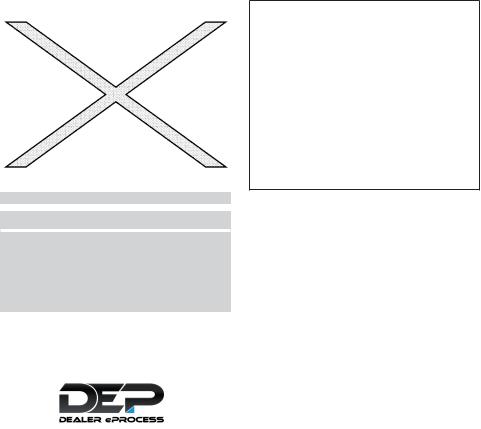
WHEN READING THE MANUAL
This manual includes information for all features and equipment available on this model. Features and equipment in your vehicle may vary depending on model, trim level, options selected, order, date of production, region or availability. Therefore, you may find information about features or equipment that are not included or installed on your vehicle.
All information, specifications and illustrations in this manual are those in effect at the time of printing. NISSAN reserves the right to change specifications, performance, design or component suppliers without notice and without obligation. From time to time, NISSAN may update or revise this manual to provide Owners with the most accurate information currently available. Please carefully read and retain with this manual all revision updates sent to you by NISSAN to ensure you have access to accurate and up-to-date information regarding your vehicle. Current versions of vehicle Owner’s Manuals and any updates can also be found in the Owner section of the NISSAN website at https://owners.nissanusa.com/nowners/ navigation/manualsGuide. If you have questions concerning any information in your Owner’s Manual, contact NISSAN Con-
sumer Affairs. For contact information, refer to the NISSAN CUSTOMER CARE PROGRAM page in this Owner’s Manual.
IMPORTANT INFORMATION ABOUT THIS MANUAL
You will see various symbols in this manual. They are used in the following ways:
WARNING
This is used to indicate the presence of a hazard that could cause death or serious personal injury. To avoid or reduce the risk, the procedures must be followed precisely.
CAUTION
This is used to indicate the presence of a hazard that could cause minor or moderate personal injury or damage to your vehicle. To avoid or reduce the risk, the procedures must be followed carefully.
APD1005
If you see this symbol, it means “Do not do this” or “Do not let this happen.”
If you see a symbol similar to these in an illustration, it means the arrow points to the front of the vehicle.
Arrows in an illustration that are similar to these indicate movement or action.
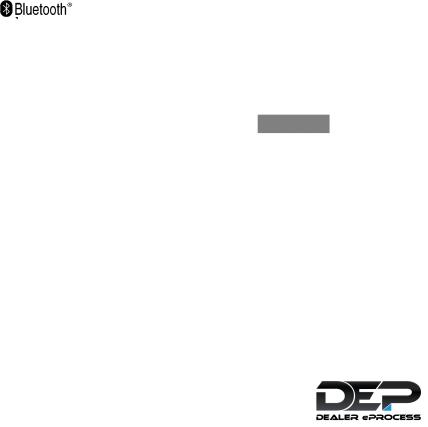
Arrows in an illustration that are similar to these call attention to an item in the illustration.
CALIFORNIA PERCHLORATE ADVISORY
Some vehicle parts, such as lithium batteries, may contain perchlorate material. The following advisory is provided: “Perchlorate Material – special handling may apply. For additional information, refer to www.dtsc.ca.gov/hazardouswaste/ perchlorate/”.
BLUETOOTH® is a trademark owned by Bluetooth SIG, Inc. and licensed to Visteon and Bosch.
SiriusXM® services require a subscription after trial period and are sold separately or as a package. The satellite service is available only in the 48 contiguous USA and DC. SiriusXM® satellite service is also available in Canada; see www.siriusxm.ca.
© 2018 NISSAN NORTH AMERICA, INC.
All rights reserved. No part of this Owner’s Manual may be reproduced or stored in a retrieval system, or transmitted in any form, or by any means, electronic, mechanical, photocopying, recording or otherwise, without the prior written permission of Nissan .

NISSAN CUSTOMER CARE PROGRAM
NISSAN CARES . . .
Both NISSAN and your NISSAN dealer are dedicated to serving all your automotive needs. Your satisfaction with your vehicle and your NISSAN dealer are our primary concerns. Your NISSAN dealer is always available to assist you with all your automobile sales and service needs.
However, if there is something that your NISSAN dealer cannot assist you with or you would like to provide NISSAN directly with comments or questions, please contact the NISSAN Consumer Affairs Department using our toll-free number:
For U.S. customers 1-800-NISSAN-1 (1-800-647-7261)
For Canadian customers 1-800-387-0122
The Consumer Affairs Department will ask for the following information:
–Your name, address, and telephone number
–Vehicle identification number (attached to the top of the instrument panel on the driver’s side)
–Date of purchase
–Current odometer reading
–Your NISSAN dealer’s name
–Your comments or questions
OR
You can write to NISSAN with the information at:
For U.S. customers
Nissan North America, Inc. Consumer Affairs Department P.O. Box 685003
Franklin, TN 37068-5003 or via e-mail at:
nnaconsumeraffairs@nissan-usa.com
For Canadian customers Nissan Canada Inc. 5290 Orbitor Drive
Mississauga, Ontario L4W 4Z5 or via e-mail at:
information.centre@nissancanada.com
If you prefer, visit us at: www.nissanusa.com (for U.S. customers) or
www.nissan.ca (for Canadian customers)
We appreciate your interest in NISSAN and thank you for buying a quality NISSAN vehicle.


Table of
Contents
Illustrated table of contents |
|
0 |
|
|
|
|
|
|
Safety—Seats, seat belts and supplemental restraint system |
|
1 |
|
|
|
|
|
|
Instruments and controls |
|
2 |
|
|
|
|
|
|
Pre-driving checks and adjustments |
|
3 |
|
|
|
|
|
|
Monitor, climate, audio, phone and voice recognition systems |
|
4 |
|
|
|
|
|
|
Starting and driving |
|
5 |
|
|
|
|
|
|
In case of emergency |
|
6 |
|
|
|
|
|
|
Appearance and care |
|
7 |
|
|
|
|
|
|
Do-it-yourself |
|
8 |
|
|
|
|
|
|
Maintenance and schedules |
|
9 |
|
|
|
|
|
|
Technical and consumer information |
|
10 |
|
|
|
|
|
|
Index |
|
11 |
|
|
|

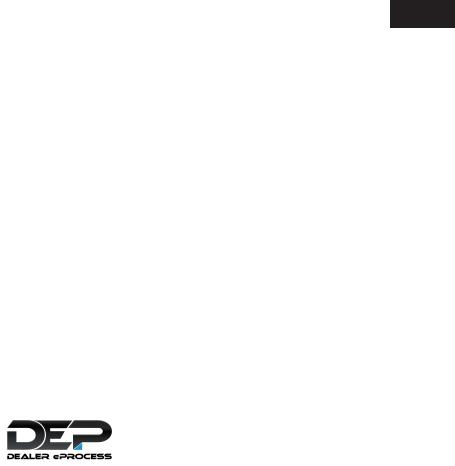
0 Illustrated table of contents
Air bags, seat belts and child restraints . . . . . . . . . . 0-2 Exterior front . . . . . . . . . . . . . . . . . . . . . . . . . . . . . . . . . . . . 0-3 Exterior rear . . . . . . . . . . . . . . . . . . . . . . . . . . . . . . . . . . . . . 0-4 Passenger compartment. . . . . . . . . . . . . . . . . . . . . . . . 0-5
Instrument panel . . . . . . . . . . . . . . . . . . . . . . . . . . . . . . . . 0-6 Engine compartment check locations . . . . . . . . . . . 0-8 Warning and indicator lights . . . . . . . . . . . . . . . . . . . . 0-10
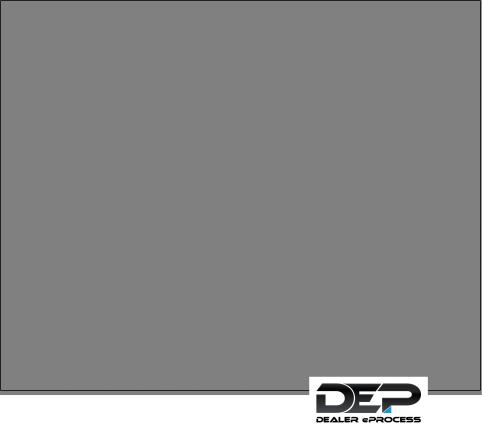
AIR BAGS, SEAT BELTS AND CHILD
RESTRAINTS
1. Rear seat belts (P. 1-15)
2. Roof-mounted curtain side-impact and rollover supplemental air bag (P. 1-73)
3. Head restraints/headrests (P.1-10)
4. Front seat belts with pretensioner(s) and shoulder height adjuster (P. 1-15, 1-73)
5. Supplemental front-impact air bags (P.1-73)
6. Seats (P. 1-2)
7. Occupant classification sensor (pressure sensor) (P. 1-73)
8. Front seat-mounted side-impact supplemental air bag (P. 1-73)
9. LATCH (Lower Anchors and Tethers for CHildren) system (P. 1-28)
10. Top tether strap anchor (P. 1-28)
Refer to the page number indicated in parentheses for operating details.
LII2310
0-2 Illustrated table of contents
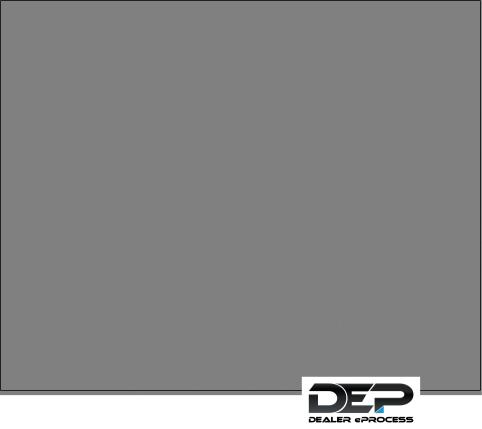
EXTERIOR FRONT
1. Engine hood (P. 3-10)
2. Wiper and washer switch (P. 2-28)
3. Windshield (P. 8-20)
4. Windows (P. 2-49)
5. Door locks (P. 3-3)
Key fob (if so equipped) (P. 3-6) Keys (P. 3-2)
6. Mirrors (P. 3-15)
7. Tire pressure (P. 8-32) Flat tire (P. 6-3)
Tire chains (P. 8-32)
8. Headlight and turn signal switch (P. 2-29)
Daytime Running Lights (DRL) system (if so equipped) (P. 2-29) Replacing bulbs (P. 8-27)
9. Fog light switch (if so equipped) (P. 2-29)
Refer to the page number indicated in parentheses for operating details.
LII2481
Illustrated table of contents 0-3
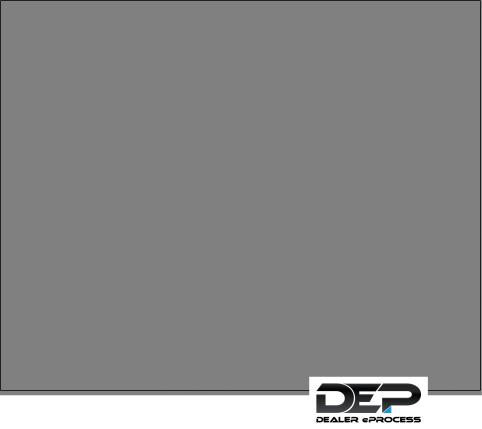
EXTERIOR REAR
1. Rear sliding window
(if so equipped) (P. 2-49) 2. Vehicle loading (P. 10-20)
Tailgate (P. 3-18) Truck box (P. 3-18)
Rearview camera (P. 4-16)
3. Towing (if so equipped) (P. 10-30)
4. Rear sonar sensors (if so equipped) (P. 5-42)
5. Replacing bulbs (P. 8-27)
6. Fuel-filler cap (P. 3-11)
Fuel recommendation (P. 10-2)
Refer to the page number indicated in parentheses for operating details.
LIC3975
0-4 Illustrated table of contents
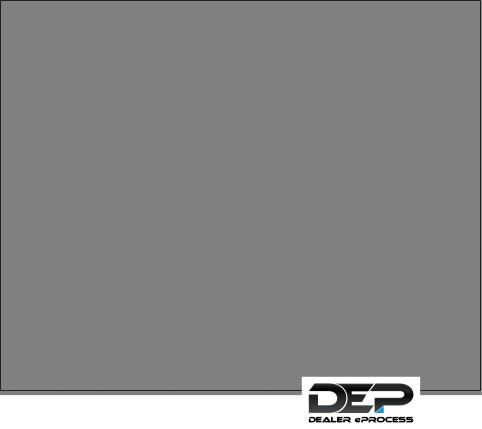
PASSENGER COMPARTMENT
1. Power moonroof
(if so equipped) (P. 2-52) 2. Map lights (P. 2-54)
3. Sun visors (P. 3-14)
4. Rearview mirror (P. 3-15) HomeLink® universal transceiver (if so equipped) (P. 2-55)
5. Glove box (P. 2-40)
6. Shift lever (P. 5-14)
7. Cup holders (P. 2-40)
8. Console box (P. 2-40)
9. Spare tire tools location (P. 6-3)
Refer to the page number indicated in parentheses for operating details.
LII2483
Illustrated table of contents 0-5
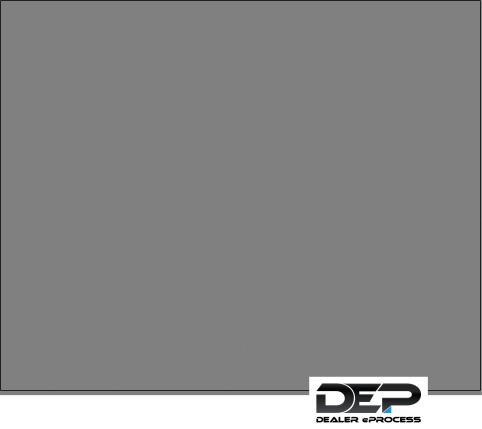
INSTRUMENT PANEL
1. Vents (P. 4-23)
2. Headlight/fog light (if so equipped)/turn signal switch (P. 2-29)
3. Steering wheel switch for audio control (P. 4-75)
Bluetooth® Hands-Free Phone System (P. 4-85, 4-103)
4. Driver supplemental air bag (P. 1-73)
Horn (P. 2-33)
5. Meters and gauges (P. 2-3) Warning and indicator lights (P. 2-14)
6. Cruise control switches (P. 5-22)
7. Wiper and washer switch (P. 2-28)
8. Storage (P. 2-40)
9. Audio system (P. 4-37)
10. Front passenger supplemental air bag (P. 1-73)
11. Upper and lower glove box (P. 2-40) 12. Passenger air bag status light
(P. 1-73)
13. USB connection port (P. 4-58) AUX input (P. 4-58)
14. Power outlets (P. 2-39)
LII2484
0-6 Illustrated table of contents

15.Electronic locking rear differential (E-Lock) system switch
(if so equipped) (P. 2-37) Heated seat switches (if so equipped) (P. 2-34)
Rear sonar switch (if so equipped) (P. 2-39)
Vehicle Dynamic Control (VDC) OFF switch (P. 2-35)
16.Shift lever (P. 5-14)
17.4WD shift switch (if so equipped) (P. 5-26)
18.Climate controls (P. 4-23, P. 4-32)
19.Hazard warning flasher switch (P. 6-2)
20.Ignition switch (P. 5-11)
21.Tilt steering wheel control (if so equipped) (P. 3-14)
22.Cargo lamp switch (P. 2-34) Clutch interlock (clutch start) switch (if so equipped) (P. 2-38) Hill descent control switch
(if so equipped) (P. 2-36) Outside mirror controls (if so equipped) (P. 3-15)
Illustrated table of contents 0-7
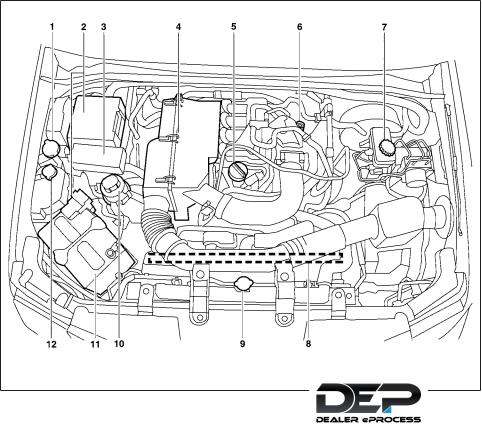
ENGINE COMPARTMENT CHECK
LOCATIONS
QR25DE engine
1. Windshield-washer fluid reservoir (P. 8-13)
2. Fuse/Fusible link box (P. 8-22)
3. Fuse box (P. 8-22)
4. Air cleaner (P. 8-18)
5. Engine oil filler cap (P. 8-7)
6. Engine oil dipstick (P. 8-7)
7. Brake and clutch (if so equipped) fluid reservoir (P. 8-12)
8. Drive belt location (P.8-16)
9. Radiator cap (P. 8-5)
10. Power steering fluid reservoir (P. 8-11)
11. Battery (P. 8-14)
12. Engine coolant reservoir (P. 8-5)
Refer to the page number indicated in parentheses for operating details.
WDI0643
0-8 Illustrated table of contents
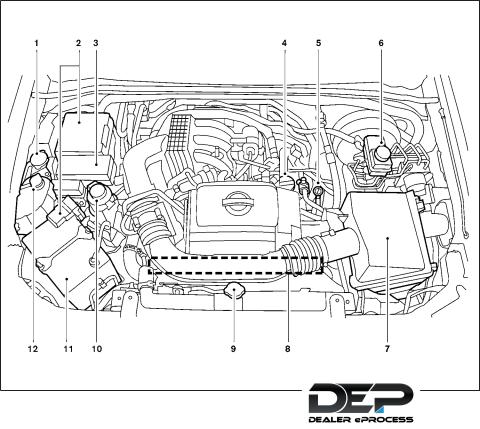
VQ40DE engine
1.Windshield-washer fluid reservoir (P. 8-13)
2.Fuse/Fusible link box (P. 8-22)
3.Fuse box (P. 8-22)
4.Engine oil filler cap (P. 8-7)
5.Engine oil dipstick (P. 8-7)
6.Brake and clutch (if so equipped) fluid reservoir (P. 8-12)
7.Air cleaner (P. 8-18)
8.Drive belt location (P.8-16)
9.Radiator cap (P. 8-5)
10.Power steering fluid reservoir (P. 8-11)
11.Battery (P. 8-14)
12.Engine coolant reservoir (P. 8-5)
*Engine cover removed for clarity.
Refer to the page number indicated in parentheses for operating details.
LII0167
Illustrated table of contents 0-9
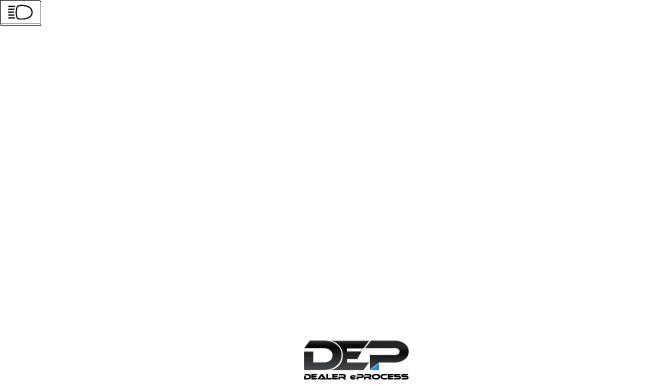
WARNING AND INDICATOR LIGHTS
Warning |
|
Name |
Page |
light |
|
|
|
|
|
|
|
|
4WD warning light |
2-15 |
|
|
( |
model) |
|
|
|
|
|
|
Anti-lock Braking |
2-15 |
|
|
System (ABS) |
|
|
or |
warning light |
|
|
|
|
|
|
|
Automatic trans- |
2-16 |
|
|
mission oil tem- |
|
|
|
perature warning |
|
|
|
light (if so |
|
|
|
equipped) |
|
|
|
|
|
|
|
Automatic trans- |
2-16 |
|
|
mission park |
|
|
|
warning light |
|
|
|
( |
model) |
|
|
|
|
|
|
Brake warning |
2-16 |
|
|
light |
|
|
or |
|
|
|
|
|
|
|
Warning |
Name |
Page |
light |
|
|
|
|
|
|
Charge warning |
2-17 |
|
light |
|
|
|
|
|
Door open warn- |
2-17 |
|
ing light |
|
|
|
|
|
Engine oil pres- |
2-17 |
|
sure warning light |
|
|
|
|
|
Low fuel warning |
2-18 |
|
light |
|
|
|
|
|
Low tire pressure |
2-18 |
|
warning light |
|
|
|
|
|
Low windshield- |
2-19 |
|
washer fluid |
|
|
warning light (if so |
|
|
equipped) |
|
|
|
|
|
Seat belt warning |
2-19 |
|
light and chime |
|
|
|
|
|
Supplemental air |
2-20 |
|
bag warning light |
|
|
|
|
Indicator |
Name |
Page |
light |
|
|
|
|
|
|
4WD shift indica- |
2-20 |
|
tor light ( |
|
|
model) |
|
|
|
|
|
Automatic trans- |
2-20 |
|
mission position |
|
|
indicator light (if |
|
|
so equipped) |
|
|
|
|
|
CRUISE indicator |
2-20 |
|
light |
|
|
|
|
|
Electronic locking |
2-21 |
|
rear differential |
|
|
(E-Lock) system |
|
|
ON indicator light |
|
|
(if so equipped) |
|
|
|
|
|
Front passenger |
2-21 |
|
air bag status |
|
|
light |
|
|
|
|
|
High beam indi- |
2-21 |
|
cator light (blue) |
|
|
|
|
0-10 Illustrated table of contents

Indicator |
|
Name |
Page |
light |
|
|
|
|
|
|
|
|
Hill descent con- |
2-21 |
|
|
trol system ON |
|
|
|
indicator light (if |
|
|
|
so equipped) |
|
|
|
|
|
|
|
Malfunction Indi- |
2-21 |
|
|
cator Light (MIL) |
|
|
|
|
|
|
|
Overdrive OFF |
2-22 |
|
|
indicator light (if |
|
|
|
so equipped) |
|
|
|
|
|
|
|
Security indicator |
2-22 |
|
|
light (if so |
|
|
|
equipped) |
|
|
|
|
|
|
|
SET indicator light |
2-22 |
|
|
|
|
|
|
Slip indicator light |
2-23 |
|
|
|
|
|
|
Transfer 4LO posi- |
2-23 |
|
|
tion indicator light |
|
|
|
( |
model) |
|
|
|
|
|
Indicator |
Name |
Page |
light |
|
|
|
|
|
|
Turn signal/ |
2-23 |
|
hazard indicator |
|
|
lights |
|
|
|
|
|
Vehicle Dynamic |
2-23 |
|
Control (VDC) OFF |
|
|
indicator light |
|
|
|
|
Illustrated table of contents 0-11

1 Safety—Seats, seat belts and supplemental restraint system
Seats . . . . . . . . . . . . . . . . . . . . . . . . . . . . . . . . . . . . . . . . . . . . 1-2 Front manual seat adjustment
(if so equipped) . . . . . . . . . . . . . . . . . . . . . . . . . . . . . . . .1-3 Front power seat adjustment
(if so equipped) . . . . . . . . . . . . . . . . . . . . . . . . . . . . . . . 1-5 Rear bench seat (if so equipped). . . . . . . . . . . . . . 1-6 Jump seat (if so equipped). . . . . . . . . . . . . . . . . . . . .1-7 Armrest (if so equipped) . . . . . . . . . . . . . . . . . . . . . . .1-7 Flexible seating . . . . . . . . . . . . . . . . . . . . . . . . . . . . . . . .1-7
Head restraints/headrests . . . . . . . . . . . . . . . . . . . . . .1-10 Adjustable head restraint/headrest components . . . . . . . . . . . . . . . . . . . . . . . . . . . . . . . . . 1-11 Non-adjustable head restraint/
headrest components. . . . . . . . . . . . . . . . . . . . . . . .1-12 Remove . . . . . . . . . . . . . . . . . . . . . . . . . . . . . . . . . . . . . .1-12 Install. . . . . . . . . . . . . . . . . . . . . . . . . . . . . . . . . . . . . . . . .1-13 Adjust . . . . . . . . . . . . . . . . . . . . . . . . . . . . . . . . . . . . . . . .1-13 Front-seat active head restraints . . . . . . . . . . . . .1-14
Seat belts . . . . . . . . . . . . . . . . . . . . . . . . . . . . . . . . . . . . . . .1-15 Precautions on seat belt usage . . . . . . . . . . . . . . .1-15 Seat belt warning light. . . . . . . . . . . . . . . . . . . . . . . .1-18
Pregnant women. . . . . . . . . . . . . . . . . . . . . . . . . . . . .1-18 Injured persons. . . . . . . . . . . . . . . . . . . . . . . . . . . . . . .1-18 Three-point type seat belt with
retractor . . . . . . . . . . . . . . . . . . . . . . . . . . . . . . . . . . . . .1-18 Seat belt extenders. . . . . . . . . . . . . . . . . . . . . . . . . . 1-24 Seat belt maintenance . . . . . . . . . . . . . . . . . . . . . . 1-25 Child safety. . . . . . . . . . . . . . . . . . . . . . . . . . . . . . . . . . . . . 1-25 Infants . . . . . . . . . . . . . . . . . . . . . . . . . . . . . . . . . . . . . . 1-26 Small children . . . . . . . . . . . . . . . . . . . . . . . . . . . . . . . 1-26 Larger children . . . . . . . . . . . . . . . . . . . . . . . . . . . . . . 1-27 Child restraints . . . . . . . . . . . . . . . . . . . . . . . . . . . . . . . . . 1-28 Precautions on child restraints . . . . . . . . . . . . . . 1-28
LATCH (Lower Anchors and Tethers for
CHildren) system . . . . . . . . . . . . . . . . . . . . . . . . . . . . .1-31 Rear-facing child restraint installation
using LATCH (Crew Cab models) . . . . . . . . . . . . . 1-35 Rear-facing child restraint installation
using LATCH — jump seat
(King Cab® models) . . . . . . . . . . . . . . . . . . . . . . . . . . 1-37 Rear-facing child restraint installation
using the seat belts (Crew Cab models). . . . . . .1-41
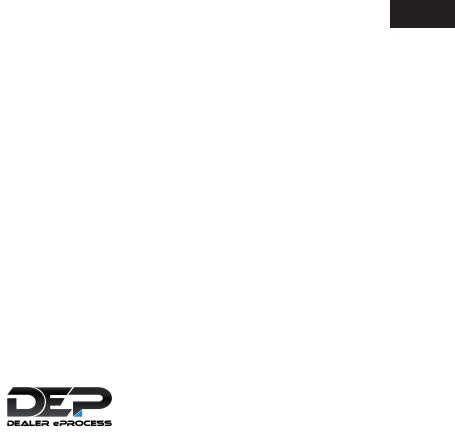
Rear-facing child restraint installation using the seat belts — jump seat
(King Cab® models) . . . . . . . . . . . . . . . . . . . . . . . . . . 1-44 Forward-facing child restraint
installation using LATCH (Crew Cab
models) . . . . . . . . . . . . . . . . . . . . . . . . . . . . . . . . . . . . . 1-48 Forward-facing child restraint
installation using LATCH — jump seat
(King Cab® models) . . . . . . . . . . . . . . . . . . . . . . . . . . 1-52 Forward-facing child restraint
installation using the seat belts — front passenger and rear bench seat
(Crew Cab models) . . . . . . . . . . . . . . . . . . . . . . . . . . 1-56
Forward-facing child restraint installation using the seat belts — front passenger and jump seats
(King Cab® models) . . . . . . . . . . . . . . . . . . . . . . . . . . .1-61 Booster seats . . . . . . . . . . . . . . . . . . . . . . . . . . . . . . . 1-68 Supplemental Restraint System (SRS). . . . . . . . . . . 1-73 Precautions on SRS. . . . . . . . . . . . . . . . . . . . . . . . . . 1-73 Supplemental air bag warning labels . . . . . . . . 1-89 Supplemental air bag warning light. . . . . . . . . . 1-90
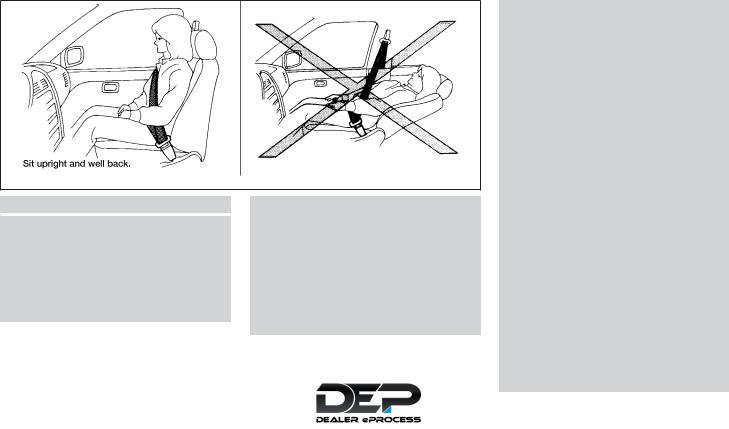
SEATS
ARS1152
WARNING
∙Do not ride in a moving vehicle when the seatback is reclined. This can be dangerous. The shoulder belt will not be against your body. In an accident, you could be thrown into it and receive neck or other serious injuries. You could also slide under the lap belt and receive serious internal injuries.
∙For the most effective protection when the vehicle is in motion, the seat should be upright. Always sit well back and upright in the seat with both feet on the floor and adjust the seat properly. For additional information, refer to “Precautions on seat belt usage” in this section.
∙After adjustment, gently rock in the seat to make sure it is securely locked.
1-2 Safety—Seats, seat belts and supplemental
∙Do not leave children unattended inside the vehicle. They could unknowingly activate switches or controls or make the vehicle move. Unattended children could become involved in serious accidents.
∙To help avoid risk of injury or death through unintended operation of the vehicle and/or its systems, do not leave children, people who require the assistance of others or pets unattended in your vehicle. Additionally, the temperature inside a closed vehicle on a warm day can quickly become high enough to cause a significant risk of injury or death to people and pets.
∙Do not adjust the driver’s seat while driving so full attention may be given to vehicle operation. The seat may move suddenly and could cause loss of control of the vehicle.
∙The seatback should not be reclined any more than needed for comfort. Seat belts are most effective when the passenger sits well back and straight up in the seat. If the seatback is reclined, the risk of sliding under the lap belt and being injured is increased.
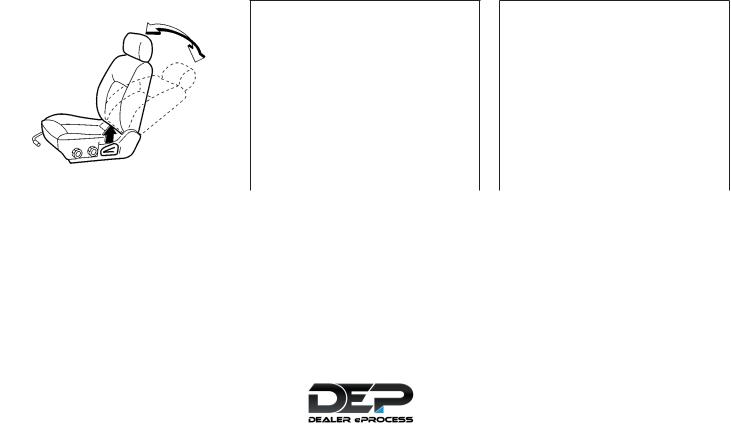
CAUTION
When adjusting the seat positions, be sure not to contact any moving parts to avoid possible injuries and/or damage.
FRONT MANUAL SEAT ADJUSTMENT (if so equipped)
Your vehicle seats can be adjusted manually. For additional information about adjusting the seats, refer to the steps outlined in this section.
WRS0175 |
|
WRS0176 |
Forward and backward |
Reclining |
|
Pull the lever up and hold it while you slide the seat forward or backward to the desired position. Release the lever to lock the seat in position.
To recline the seatback, pull the lever up and lean back. To bring the seatback forward, pull the lever up and lean your body forward. Release the lever to lock the seatback in position.
The reclining feature allows adjustment of the seatback for occupants of different sizes for added comfort and to help obtain proper seat belt fit. For additional information, refer to “Precautions on seat belt usage” in this section. Also, the seatback can be reclined to allow occupants to rest when the vehicle is stopped and the shift
seat belts and supplemental restraint system 1-3
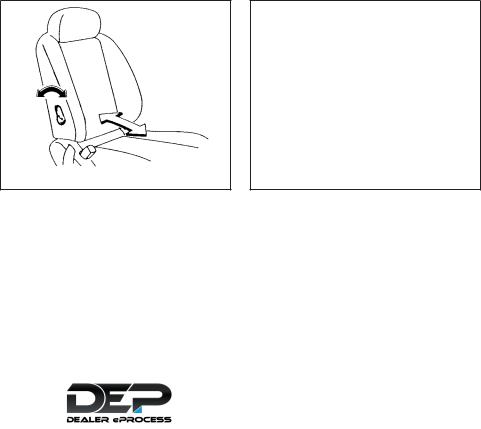
lever is in P (Park) or N (Neutral) position with the parking brake fully applied.
WRS0131
Seat lifter (if so equipped for driver’s seat)
Turn either dial to adjust the angle and height of the seat cushion to the desired position.
WRS0389
Lumbar support (if so equipped for driver’s seat)
The lumbar support feature provides adjustable lower back support to the driver. Move the lever forward or backward to adjust the seat lumbar area.
1-4 Safety—Seats, seat belts and supplemental
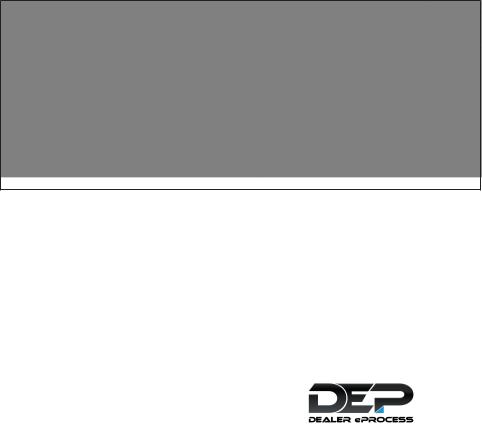
LRS2897
FRONT POWER SEAT ADJUSTMENT (if so equipped)
Operating tips
∙The power seat motor has an autoreset overload protection circuit. If the motor stops during operation, wait 30 seconds then reactivate the switch.
∙Do not operate the power seat switch for a long period of time when the engine is off. This will discharge the battery.
Forward and backward
Moving the switch as shown will slide the seat forward or backward to the desired position.
Reclining
Move the recline switch as shown until the desired angle is obtained.
The reclining feature allows adjustment of the seatback for occupants of different sizes for added comfort and to help obtain proper seat belt fit. For additional information, refer to “Precautions on seat belt usage” in this section. Also, the seatback can be reclined to allow occupants to rest when the vehicle is stopped and the shift lever is in P (Park) or N (Neutral) position with the parking brake fully applied.
seat belts and supplemental restraint system 1-5
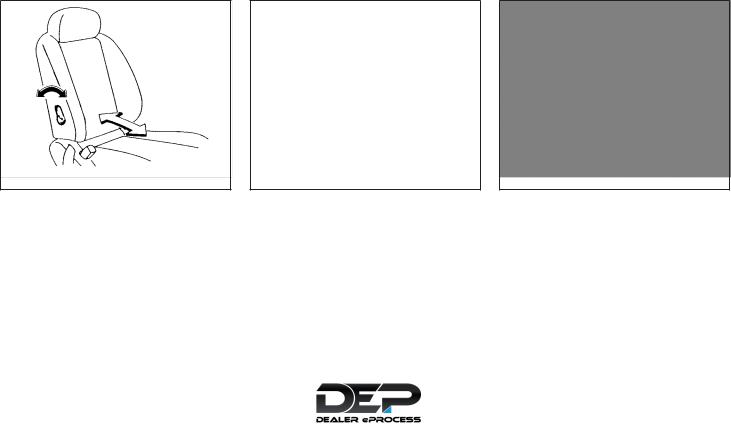
LRS2898
Seat lifter (driver’s seat)
Move the switch as shown to adjust the angle and height of the seat cushion.
WRS0389
Lumbar support (driver’s seat)
The lumbar support feature provides adjustable lower back support to the driver. Move the lever forward or backward to adjust the seat lumbar area.
LRS2903
REAR BENCH SEAT (if so equipped)
The rear bench seat is non-adjustable. However, the seats can be folded up and folded to lay flat. For additional information, refer to “Flexible seating” in this section.
1-6 Safety—Seats, seat belts and supplemental

LRS0556
JUMP SEAT (if so equipped)
WARNING
∙Do not use a child restraint in the driver’s side jump seat. This seating position is not suitable for child restraint installation. A child restraint can be installed in the passenger’s side jump seat when the seat extension is unfolded from the seat base.
∙When folding the jump seat, be careful not to squeeze your finger between the seat cushion and the body side.
LRS2901
ARMREST (if so equipped)
To use the center armrest on the rear bench seat, pull on the tab in the center of the seat and fold it down as shown.
FLEXIBLE SEATING
WARNING
∙Never allow anyone to ride in the cargo area or on the rear seats when they are in the fold-down position. In a
collision, people riding in these areas
without |
proper restraints are more |
likely to |
or killed. |
∙Do not allow people to ride in any area of your vehicle that is not equipped with seats and seat belts. Be sure everyone in your vehicle is in a seat and using a seat belt properly.
∙Do not allow more than one person to use the same seat belt.
∙Do not fold down the rear seats when occupants are in the rear seat area or any luggage is on the rear seats.
–Make sure that the seat path is clear before moving the seat.
–Be careful not to allow hands or feet to get caught or pinched in the seat.
∙Head restraints/headrests should be adjusted properly as they may provide significant protection against injury in an accident. Always replace and adjust them properly if they have been removed for any reason.
∙If the head restraints/headrests are removed for any reason, they should be securely stored to prevent them from causing injury to passengers or damage to the vehicle in case of sudden braking or an accident.
seat belts and supplemental restraint system 1-7
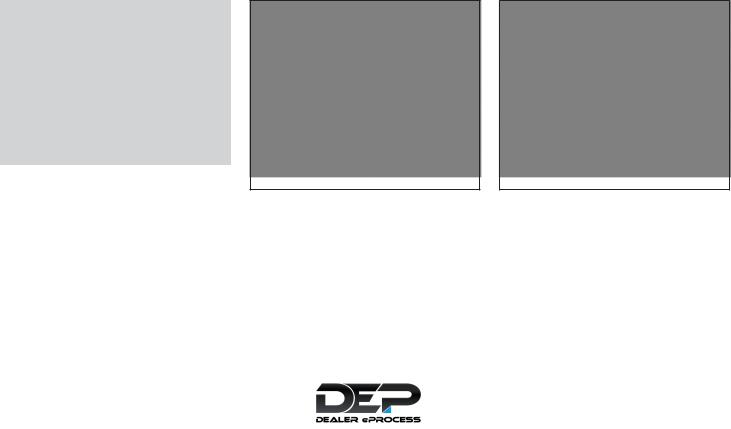
∙When returning the seatbacks to the upright position, be certain they are completely secured in the latched position. If they are not completely secured, passengers may be injured in an accident or sudden stop.
∙Properly secure all cargo to help prevent it from sliding or shifting. Do not place cargo higher than the seatbacks. In a sudden stop or collision, unsecured cargo could cause personal injury.
LRS2475
Folding the rear bench seat up (if so equipped)
To fold the rear bench seat up:
1. Lift up on the lever, located on the side of the seat, while lifting the front of the seat cushion up.
LRS2476
2.Fold the bottom of the seat cushion toward the back of the vehicle until it locks in place.
1-8 Safety—Seats, seat belts and supplemental
